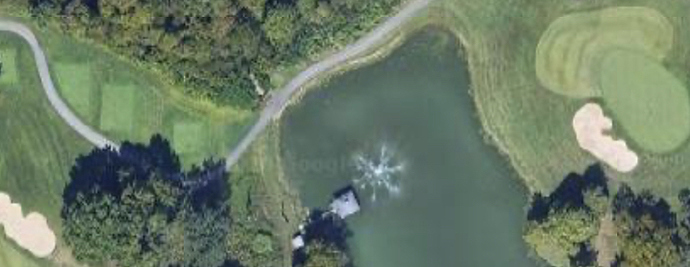I think this is a concept that is simple to explain and hard for most of us to actually do.
The flag is where the hole is! That’s where my ball is supposed to go.
This season, I’ve been working on better targeting and putting the ball on the green. Unfortunately, my main weakness is putting, so ending up on the greens nets me more putts… this was highlighted by a nine hole stretch where I hit 9/9 greens and shot 2 over. Ouch.
That doesn’t mean the strategy is bad, it just means I’m a bad putter.
To me, though, I target the safest part of the green with consideration of where the flag is and where the good miss is.
This is the second hole at my club. 160 yards from the white tees, from the water to the green is about forty feet of elevation. The bunker leads to a blind shot. The green is probably forty yards wide by 15 yards deep. Ridge in the middle that slopes down on each side.
This is a fairly extreme example, but I only aim at the middle (and take more club) when the pin is on the right. That allows me to miss left or long and be fine, and minimizes far right and short misses.
If the pin is left, I aim for the middle of the left side. Left or short is short grass.
My goal is to take the bunker out of play and keep missed on the green or in the short grass. I’d rather be left of green on a left pin then on the green but right.
I’m curious about what distances people should get more aggressive on pins and other tactics.
I’m still figuring out the balance of aiming for center… and how to adjust the strategy to work best for me.



